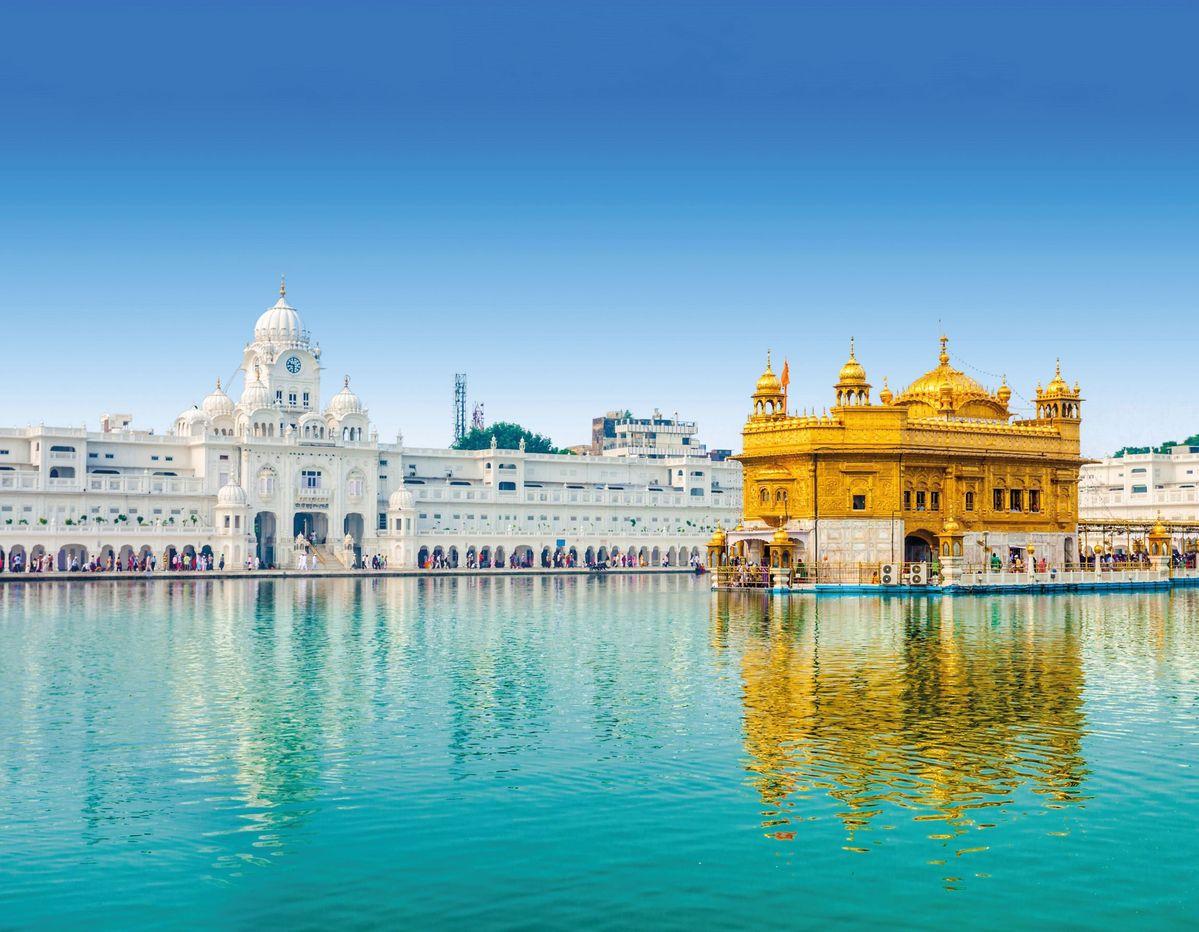India is home to countless spiritual landmarks, but few are as iconic and revered as the Golden Temple in Amritsar, Punjab. Officially known as Sri Harmandir Sahib, this sacred site is not only the holiest shrine for Sikhs but also a symbol of peace, equality, and humility. With its shimmering golden façade, serene surroundings, and rich history, the Golden Temple attracts millions of pilgrims and tourists from across the globe every year.
In this guide, we’ll take you through the history, cultural significance, architecture, and travel tips to help you plan a memorable visit to the Golden Temple in India.
1. A Glimpse into the History of the Golden Temple
The foundation of the Golden Temple dates back to the 16th century, when the fourth Sikh Guru, Guru Ram Das, established the holy city of Amritsar in 1577. Later, the fifth Guru, Guru Arjan Dev, designed the temple’s structure and installed the Guru Granth Sahib, the sacred scripture of Sikhism, inside the shrine in 1604.
The temple has undergone several reconstructions due to invasions, but in the 19th century, Maharaja Ranjit Singh, the leader of the Sikh Empire, covered the temple with gold, giving it the iconic look that we admire today.
2. Spiritual Significance
The Golden Temple is much more than a monument—it is the spiritual center of Sikhism. Pilgrims believe visiting the temple brings peace, humility, and divine blessings. Its teachings emphasize values such as:
-
Equality: Open to all, regardless of religion, caste, or nationality.
-
Service (Seva): Visitors often volunteer in cleaning, cooking, or serving food.
-
Community: The temple welcomes millions of visitors every year without discrimination.
This openness and inclusivity make the Golden Temple a powerful symbol of unity.
3. Architectural Splendor
The Golden Temple is a masterpiece of Sikh architecture, blending Islamic and Hindu styles with unique Sikh artistry. Key highlights include:
-
The Golden Dome: Covered with nearly 750 kg of gold leaf, reflecting beautifully in the surrounding waters.
-
Amrit Sarovar (Holy Tank): The temple is surrounded by a large sacred pool of water, from which the city gets its name, Amritsar (“pool of nectar”).
-
Bridge & Causeway: A 60-meter path connects the main entrance to the sanctum, symbolizing the journey of life.
-
Harmandir Sahib Sanctum: The inner sanctum where the Guru Granth Sahib is placed, with continuous recitation of hymns (kirtan).
The entire structure exudes peace, balance, and divine beauty.
4. The Langar: World’s Largest Free Kitchen
One of the most extraordinary experiences at the Golden Temple is the Langar, or community kitchen. Every day, the temple serves free vegetarian meals to over 100,000 visitors, regardless of their background. Volunteers prepare, cook, and serve food as part of seva (selfless service).
For first-time visitors, sitting cross-legged in rows and sharing a meal with strangers is a deeply humbling and unforgettable experience.
5. Best Time to Visit the Golden Temple
The Golden Temple is open year-round, but the experience varies with the seasons:
-
October to March: Pleasant weather, ideal for sightseeing.
-
April to June: Hot summers, but evenings around the temple are magical.
-
July to September: Monsoon season brings rain but also fewer crowds.
For a truly enchanting experience, visit during Gurpurab (Guru Nanak Jayanti) or Diwali, when the temple is illuminated with lights and celebrations.
6. Things to Do at the Golden Temple
-
Pay respects inside the sanctum: Witness the Guru Granth Sahib and listen to soulful hymns.
-
Take a dip in the Amrit Sarovar: Many pilgrims believe the holy water has healing powers.
-
Enjoy the Langar: Experience the world’s largest free meal service.
-
Explore the Akal Takht: The highest seat of Sikh authority, representing justice and sovereignty.
-
Night View: The Golden Temple illuminated under the moonlight is a breathtaking sight.
7. Tips for Travelers
To make your visit respectful and enjoyable, keep these tips in mind:
-
Cover Your Head: Scarves and head coverings are available at the entrance.
-
Remove Shoes: Leave your footwear in the designated area.
-
Dress Modestly: Wear simple, conservative clothing.
-
Maintain Silence: The temple is a spiritual place, so respect the peace.
-
Photography: Allowed outside but restricted inside the sanctum.
8. How to Reach the Golden Temple
-
By Air: The nearest airport is Sri Guru Ram Dass Jee International Airport (11 km from the temple).
-
By Train: Amritsar Junction is well connected to Delhi, Chandigarh, and other major cities.
-
By Road: Buses and taxis are available from nearby cities.
9. Nearby Attractions
While visiting the Golden Temple, don’t miss other attractions in Amritsar:
-
Jallianwala Bagh: A historic garden and memorial site.
-
Wagah Border Ceremony: A vibrant military parade on the India-Pakistan border.
-
Partition Museum: Learn about India’s partition history through exhibits.
10. Why You Must Visit
The Golden Temple isn’t just about its glittering façade—it’s about the values it represents: equality, service, humility, and harmony. For travelers, it provides a once-in-a-lifetime chance to experience spirituality in its purest form.
Conclusion
The Golden Temple in India is more than a monument; it is a living symbol of faith and humanity. From its golden architecture and serene waters to the soulful hymns and the heartwarming langar, every aspect of this shrine leaves visitors with a sense of peace and awe.
Whether you are a pilgrim or a traveler exploring India, the Golden Temple is a destination that will stay in your heart forever.



